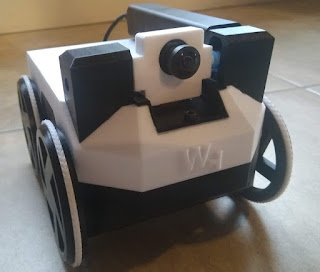London-based DeepMind, owned by Google's parent company Alphabet, announced that eye diseases could be diagnosed using artificial intelligence.
DeepMind, bought by Google in 2014, continues to work for the use of artificial intelligence in health care. According to the study published in Science magazine, DeepMind succeeded in detecting more than 50 eye disorders with artificial intelligence. The company, which cooperates with the Moorfields Eye Hospital in London, has announced that it has trained algorithms to detect the same accuracy as specialist doctors. Artificial intelligence also has the ability to correctly suggest the most appropriate treatment for patients and prioritize the most urgent care needs.
With a project that started two years ago, DeepMind developed machine learning using thousands of historical and fully anonymous eye scans to identify diseases that could lead to visual loss. According to the study, the system can diagnose at 94% accuracy. The company thinks that artificial intelligence will play a bigger role in health and eye examinations will be done with this method.London-based Babylon Health has announced that the artificial intelligence technology it has developed is capable of testing the general practitioners in Britain and is more successful than humans. In March, a group of researchers found that artificial intelligence could better classify the anatomy of a heart than a human being. Diagnosing eye diseases from ocular scans is a complicated and time consuming process for doctors. In addition, the aging global population and increasingly widespread eye diseases mean that the burden on health systems increases. For these reasons, a suitable environment for the entry of artificial intelligence into the healthcare sector has emerged. Pearce Keane, consultant consultant at Moorfields, used the phrase "The number of eye scans we made is growing much faster than human experts can interpret."Keane stated that this situation is likely to cause delays in the diagnosis and treatment of vision-threatening diseases, which may be devastating for patients. Using artificial intelligence for examination may mean earlier diagnosis and therefore earlier treatment for patients. DeepMind's artificial intelligence was trained using a kind of eye scanner, but the researchers indicated that it was compatible with any model. In addition, artificial intelligence can explain how doctors reach a certain diagnosis, which allows doctors to examine whether the machine has been diagnosed correctly before proceeding with the treatment.
Diagnosing eye diseases from ocular scans is a complicated and time consuming process for doctors. In addition, the aging global population and increasingly widespread eye diseases mean that the burden on health systems increases. For these reasons, a suitable environment for the entry of artificial intelligence into the healthcare sector has emerged. Pearce Keane, consultant consultant at Moorfields, used the phrase "The number of eye scans we made is growing much faster than human experts can interpret."Keane stated that this situation is likely to cause delays in the diagnosis and treatment of vision-threatening diseases, which may be devastating for patients. Using artificial intelligence for examination may mean earlier diagnosis and therefore earlier treatment for patients. DeepMind's artificial intelligence was trained using a kind of eye scanner, but the researchers indicated that it was compatible with any model. In addition, artificial intelligence can explain how doctors reach a certain diagnosis, which allows doctors to examine whether the machine has been diagnosed correctly before proceeding with the treatment.
Artificial intelligence should be passed through clinical trials and approved before being used in hospitals. "Optometrists are very excited about the potential of the artificial intelligence to help the illness because the first call point for people with ocular disease is often the indication," said Martin Cordiner, head of research at the UK Optometrists College.
DeepMind, bought by Google in 2014, continues to work for the use of artificial intelligence in health care. According to the study published in Science magazine, DeepMind succeeded in detecting more than 50 eye disorders with artificial intelligence. The company, which cooperates with the Moorfields Eye Hospital in London, has announced that it has trained algorithms to detect the same accuracy as specialist doctors. Artificial intelligence also has the ability to correctly suggest the most appropriate treatment for patients and prioritize the most urgent care needs.

With a project that started two years ago, DeepMind developed machine learning using thousands of historical and fully anonymous eye scans to identify diseases that could lead to visual loss. According to the study, the system can diagnose at 94% accuracy. The company thinks that artificial intelligence will play a bigger role in health and eye examinations will be done with this method.London-based Babylon Health has announced that the artificial intelligence technology it has developed is capable of testing the general practitioners in Britain and is more successful than humans. In March, a group of researchers found that artificial intelligence could better classify the anatomy of a heart than a human being.
 Diagnosing eye diseases from ocular scans is a complicated and time consuming process for doctors. In addition, the aging global population and increasingly widespread eye diseases mean that the burden on health systems increases. For these reasons, a suitable environment for the entry of artificial intelligence into the healthcare sector has emerged. Pearce Keane, consultant consultant at Moorfields, used the phrase "The number of eye scans we made is growing much faster than human experts can interpret."Keane stated that this situation is likely to cause delays in the diagnosis and treatment of vision-threatening diseases, which may be devastating for patients. Using artificial intelligence for examination may mean earlier diagnosis and therefore earlier treatment for patients. DeepMind's artificial intelligence was trained using a kind of eye scanner, but the researchers indicated that it was compatible with any model. In addition, artificial intelligence can explain how doctors reach a certain diagnosis, which allows doctors to examine whether the machine has been diagnosed correctly before proceeding with the treatment.
Diagnosing eye diseases from ocular scans is a complicated and time consuming process for doctors. In addition, the aging global population and increasingly widespread eye diseases mean that the burden on health systems increases. For these reasons, a suitable environment for the entry of artificial intelligence into the healthcare sector has emerged. Pearce Keane, consultant consultant at Moorfields, used the phrase "The number of eye scans we made is growing much faster than human experts can interpret."Keane stated that this situation is likely to cause delays in the diagnosis and treatment of vision-threatening diseases, which may be devastating for patients. Using artificial intelligence for examination may mean earlier diagnosis and therefore earlier treatment for patients. DeepMind's artificial intelligence was trained using a kind of eye scanner, but the researchers indicated that it was compatible with any model. In addition, artificial intelligence can explain how doctors reach a certain diagnosis, which allows doctors to examine whether the machine has been diagnosed correctly before proceeding with the treatment.
Artificial intelligence should be passed through clinical trials and approved before being used in hospitals. "Optometrists are very excited about the potential of the artificial intelligence to help the illness because the first call point for people with ocular disease is often the indication," said Martin Cordiner, head of research at the UK Optometrists College.




